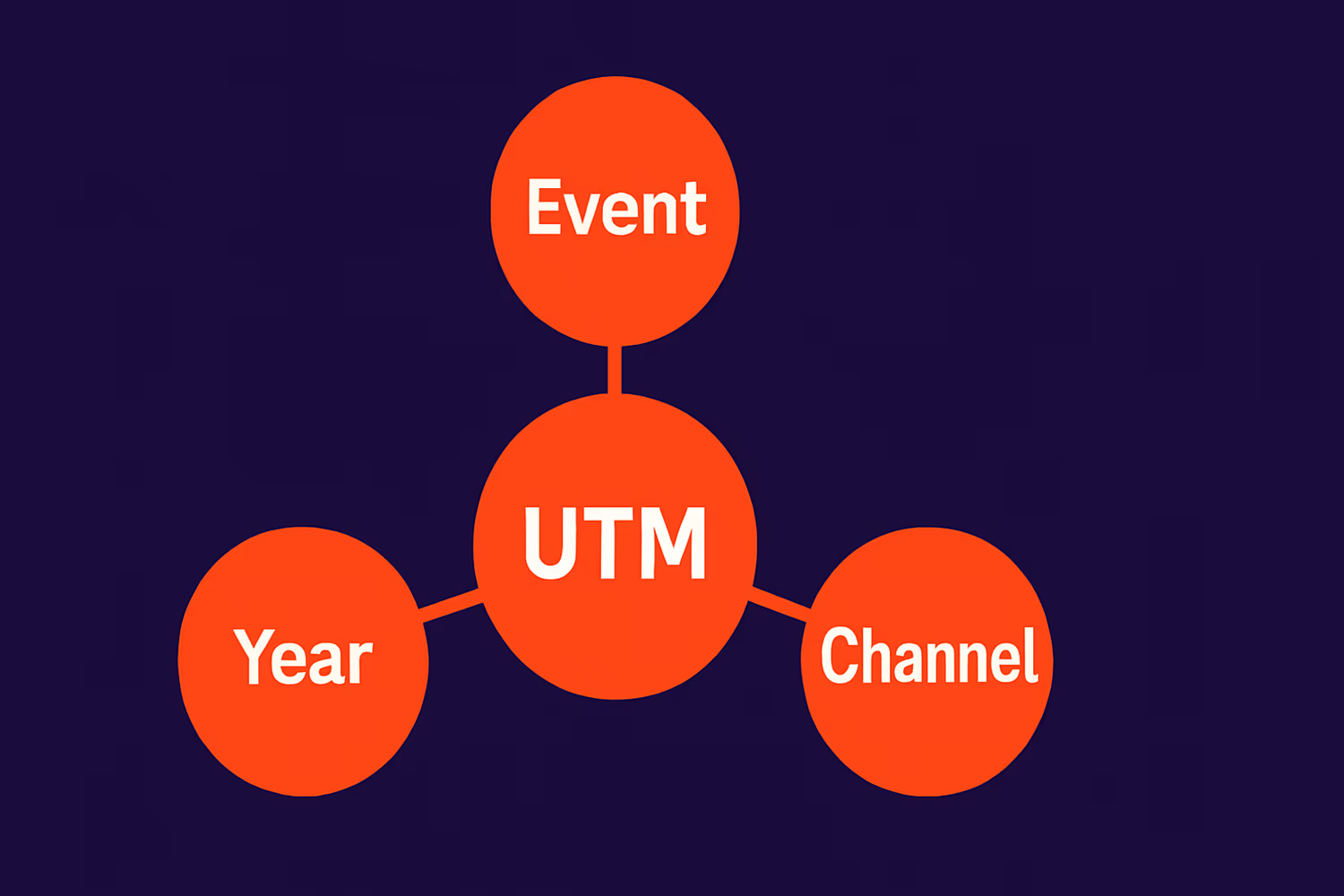Why We Opeted To Use Delimiters
Event marketing is complex - multiple campaigns, partner agencies, long lead times, co-op marketing. Standard UTMs work, but delimiters (those little dashes - between parts of your campaign names) unlock much deeper analysis.
How it works:
Take this campaign name: pastDelegates-ge24-ds
pastDelegates- which audience segmentge24- which event (Great Event 2024)ds- which channel focus (Delegate Sales)
Why this structure is powerful:
Filter by event: Search for -ge24- and see everything for this year's event in one view.
Compare year-over-year: Want to know if you're ahead of last year's pace? Compare -ge24- against -ge23- for the same week. You're measuring against your own trajectory, not just arbitrary targets.
Track channel performance: Filter by -ds to see how your entire delegate sales channel is performing across all campaigns.
Works with AI: This structure makes it trivial to ask AI tools: "Compare all ge24 delegate sales campaigns to ge23" and get accurate analysis.
The point isn't complicated UTMs - it's building your tracking so you can answer the questions that actually matter for running events year after year.
Tip 1: Make it AI-Friendly
When designing your UTM structure, remember that you'll likely be asking AI tools to analyse this data. Structured, descriptive naming helps:
- Context in the name:
pastDelegates-ge24-dstells both humans and AI what this campaign is about - Consistent delimiters: The
-separator lets AI (and reporting tools) easily parse campaign components - Descriptive labels:
dsfor "Delegate Sales" is fine if documented, butdelegateSaleswould be even clearer for AI interpretation - Avoid ambiguity:
news1vsnewsletter-jan- the second is instantly understandable to any analysis tool
The more structured and descriptive your UTMs, the easier it is to prompt an AI: "Compare all delegate sales campaigns from ge24 vs ge23" and get accurate results.
Building Your Own Framework
Our framework works for us, but yours needs to answer your specific questions. Here are the kinds of questions that shaped our structure - use them as prompts for what you need to track:
- Does featuring speaker bios drive more signups than just headshots?
- Do targeted email campaigns outperform general newsletter mentions?
- Which CTA performs better: "Register Now" vs "Learn More"?
- Are social ads or influencer partnerships better investments?
- When's the optimal time to deploy PPC campaigns?
- Does listing speaker count work better than profiling individuals?
The process: List your questions first, then build (or adapt) a UTM structure that can answer them. Get input from your team - the people running campaigns know what they need to measure.
Tip 2: Persist Your UTMs
Try as much as possible to persist your UTMs especially if your are embeding registration forms.
Cookies:
- Despite concerns about third-party cookies, first-party cookies (cookies set by your own website) are a reliable persistence method.
- Store UTM data from the initial site visit in a cookie.
- Include hidden fields on registration forms to capture the stored cookie data, linking it to individual registrations.
Local Storage:
- Use JavaScript to append UTM data as users navigate your site.
- This method has its drawbacks but remains a valid option.
Server-Side Logic:
It is the most advanced form of attribution modelling, but it requires investment in a server and potentially a data team for analysis.
Benefits of UTM Persistence
Enhanced Resolution: Understand what initially drove website traffic and the eventual registration conversion despite time lags.
Channel Evaluation: See how channels work together (e.g., LinkedIn for initial awareness and PPC for later conversion).
Informed Predictions: Better predict event attendance and acquisition strategies based on understanding channel characteristics and conversion timelines.
Important Note: Events marketing has a different rhythm than immediate e-commerce transactions. Analysis and attribution strategies must be adapted to bridge this gap and optimise event attendance.




